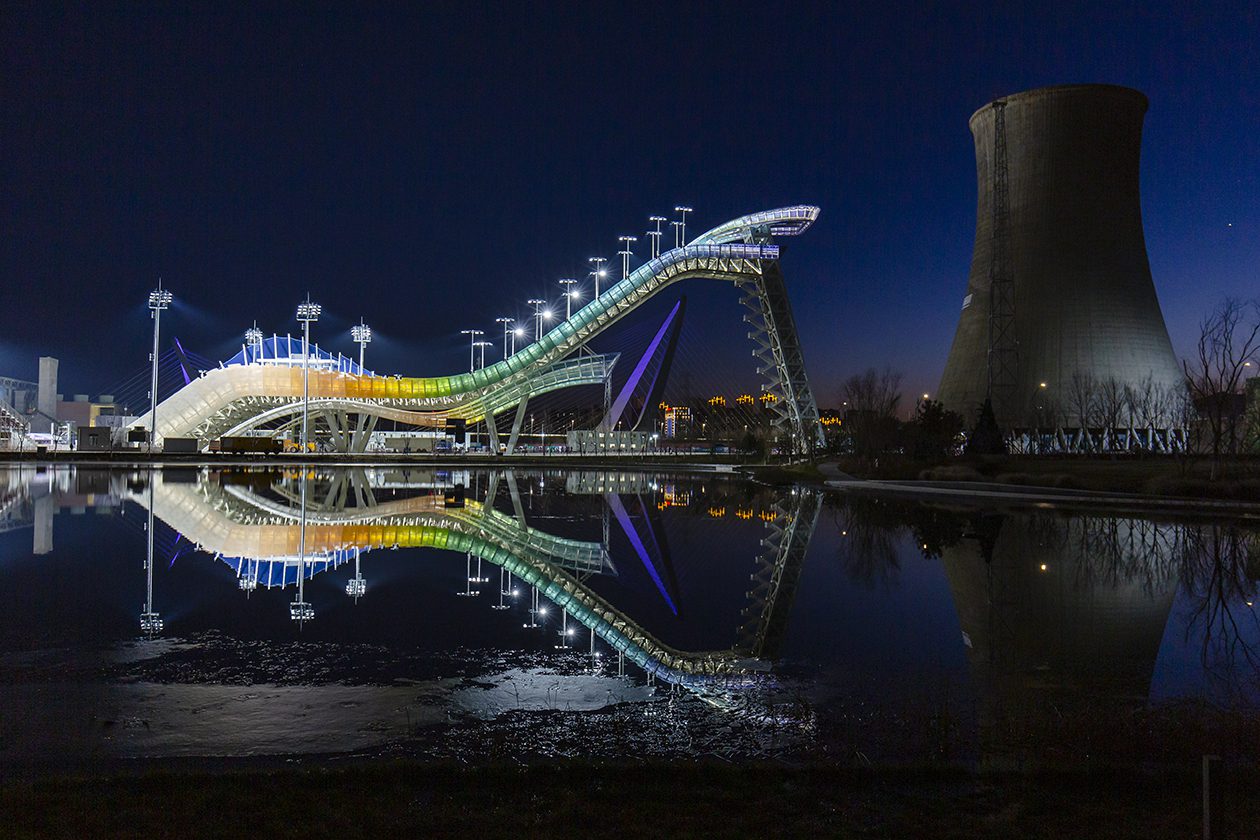The Future of Competitive Snowboarding
How new formats and fresh perspectives are shaping snowboarding’s future
Big news is shaking up competitive snowboarding: new leagues; innovative formats; creative courses, and ever-more-regular NBD’s on social media are challenging what it means to ‘compete’ in the sport. But as snowboarding edges closer to thrilling new heights, riders, coaches, and insiders are questioning: where is it all leading? So, is it the tricks, the spirit of competition, or just the thrill of riding that will shape snowboarding’s future?
words | Alba Pardo
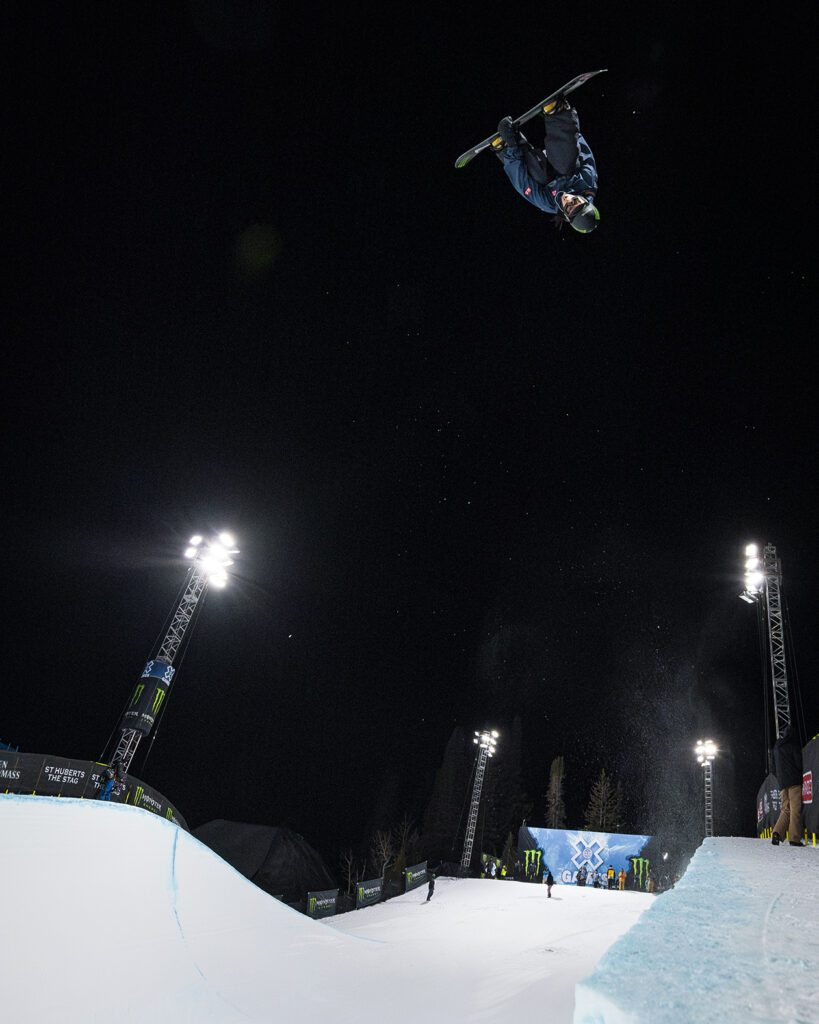
Event overload: Two new Leagues incoming
Big news has shaken the snowboard community over the summer. For starters, X Games came out with an announcement of the new X Games League, where multidisciplinary teams – meaning that at the very least they’ll be mixing skiers and snowboarders in the same team – will compete for both individual and team points, essentially taking on the Formula One model.
Although we will have to wait until 2026 to see the X Games League in action, the information available so far explains that there will be four events as part of the Winter X Games League. It unveils the reasoning behind this concept is to ensure a consistent year-round living for the athletes.
Just a few days after this announcement, another league appeared in the realm of winter sports. Shaun White announced the Snow League, a new pro-tour with a $1.5m prize purse for the first season, which is launching in March 2025 in Aspen, Colorado, with its first halfpipe competition. This new league will feature a points-based ranking system and head-to-head championships that remind us of the World Surf League model. The Snow League will also host freeskiing competitions.
FIS Snowboard continues business as usual, with its scheduled World Cup Calendar and the World Championships taking place in Silvaplana later in March, too.
In addition to the ever more popular rail jams, a few independent slopestyle events, and a dose of freestyle backcountry (thanks to the Natural Selection Tour) to throw into the mix, one thing is for sure: this is going to be a hell of a competitive season.
As I see core brands struggle, restructure, and rethink their marketing budgets, reduced team and media spends, and data suggesting that sales haven’t been great for the last couple of seasons, I wonder if this is the answer to the struggle or just the natural evolution necessary to progress the sport?
But whether we like it or not, snowboarding competitions play a crucial role in shaping both the sport and the industry, and as a community, we must embrace the fact that competitive snowboarding will drive the sport’s evolution. It’s our responsibility to stay curious, explore new possibilities, and keep an open mind about where the future of snowboarding could lead…
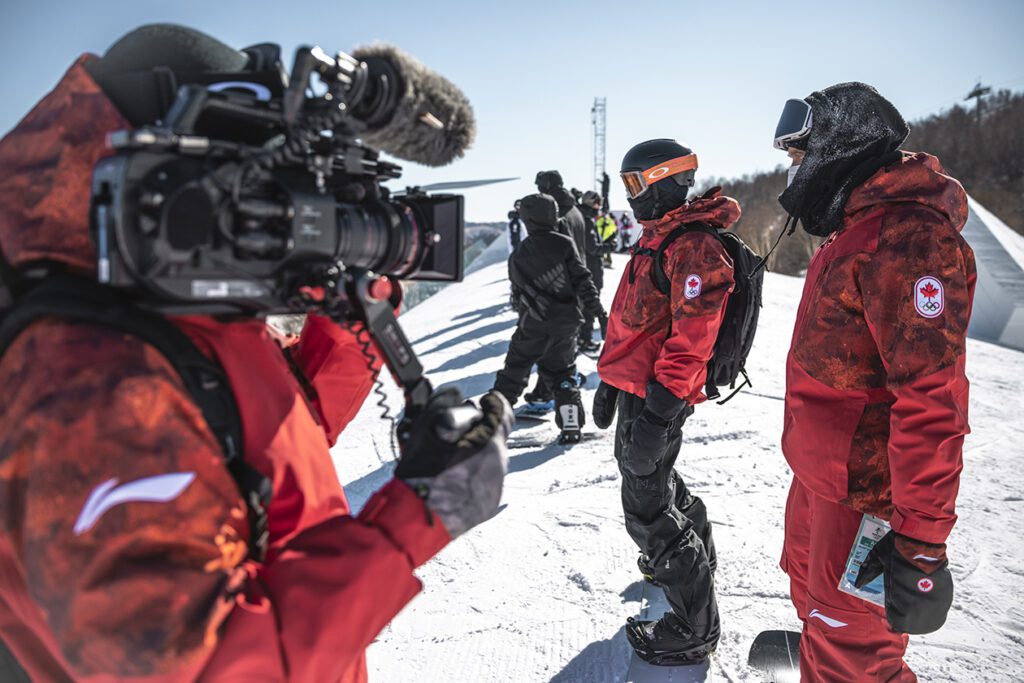
So, where is it all going?
Maybe it’s just me, but watching some of the events, I sometimes wonder: is this even snowboarding anymore? Specifically, with Big Air contests, I have a hard time appreciating the wholesomeness of the sport within just that one jump. I also wonder what are the limits of what can be done and how is this elite performance giving back to the community. I admit that probably not every snowboarder goes down rabbit holes of over-analyzing the ins and outs of the contests, media coverage, and performance. But I also realize that there are a few things that the snowboarding community has never agreed on (and the chatter on social media will forever keep at it!).
To gain insight into the future of competitive snowboarding, I turned to a group of people whose opinions I deeply respect – not just for their professional expertise but for their genuine passion and human approach towards competition. These are individuals who live and breathe snowboarding, relentlessly committed to uplifting their communities and ensuring our larger snowboarding family continues to thrive. Their dedication is nothing short of inspiring, and I couldn’t think of anyone better to weigh in on where our sport is heading.
Specialized riders, formats,
courses and set-ups
With the announcement of new tours, formats, head-to-head competitions, creative features and modified pipes, one might wonder if the current competition formats are sufficient to both evolve the sport and engage audiences. While Snow League’s Head of Competition, Sandy Macdonald, affirms that “our current formats work”, he acknowledges that standardized structures are necessary for events like the FIS World Cup. However, independent events like the Snow League have the freedom to experiment with innovative formats, and Macdonald believes this should be “an ever-evolving process” to see what works and what doesn’t.
Both two-time Olympic snowboarder, Taylor Gold, and World Cup and Olympic Judge from Australia, Adam Beggs, are excited about the head-to-head match-ups. “It makes it feel more personal and exciting,” says Gold. “I think that if we want to engage a wider audience and secure lucrative TV deals there is a lot of opportunity in this space. Here we could really see people get behind snowboarding. It would be great to see some of the strategy and gamesmanship that comes with a head-to-head format making it easier for viewers to grasp, as they can directly compare riders and identify their favorites rather than picking a winner out of 30 competitors,” adds Adam.
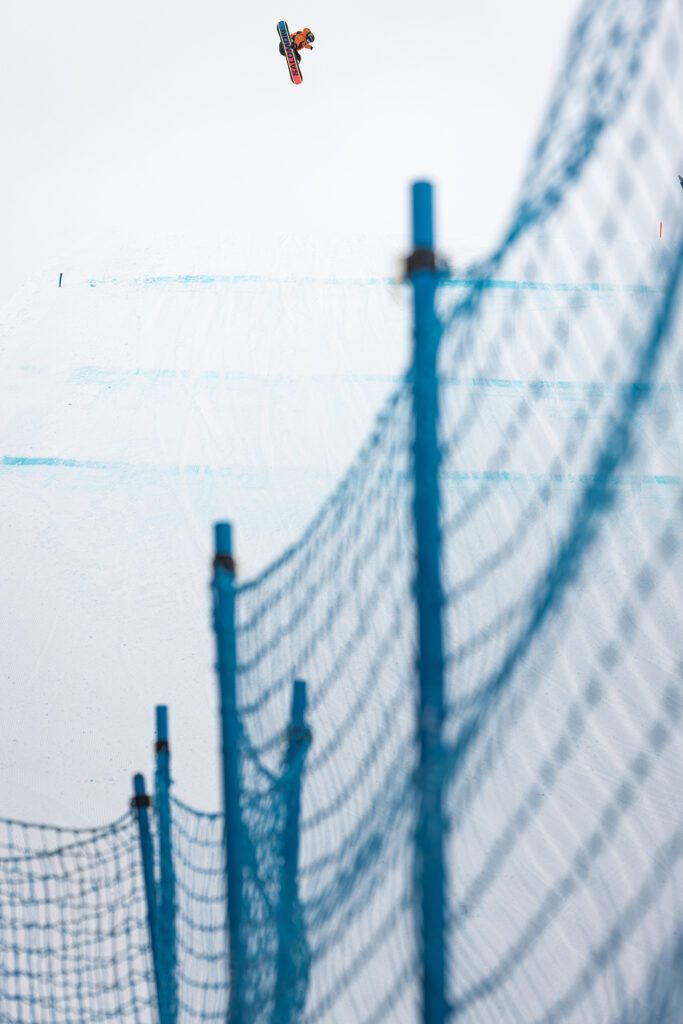
Another interesting observation about the current competition formats is the number of participants that take part in each event. The lead freestyle coach at Snowboard Canada, Chris Witwicki, explains that, “Right now, specifically in the World Cup events, there are too many riders in the men’s field. This limits pretty much any changes we can make to the formats. But changes in the schedule due to weather or adverse conditions are common during the competitions. Having a crowded field means that the flexibility isn’t there, especially in slopestyle, which ends up affecting the way they have to judge and score the events. Whether they default to overall scoring or double-up judging format, it doesn’t produce an accurate ranking as the judging panel is split”. Witwicki continues to contrast the crowded fields of the World Cup with the opposite scenario observed at other events, “Right now there is no rhyme or reason or explanation to invites to X games, and the fields are very small – you don’t have the strongest fields, there is no equitable access to the events, and there is only one phase of an event, the finals. To me, 24 to 30 athletes is the magic number for an event to run qualifiers, semi-finals, and finals and have an accurate result and a small field three-run final. With these numbers, you can play around with more formats and phases for an event.”
Former pro rider, World Cup judge, and World Snowboard Federation President Satu Jarvela opens Pandora’s box about creativity, expressing how, “Standard slopestyle is boring, although for tour riders it is easier and safer to perform the same routine”. Taylor Gold shares the sentiment and adds, “It would be amazing to let builders go crazy – build channel gaps, volcanos, hips, knuckles, even moguls, anything to force riders to adapt to something they can’t ride often. Even combine pipe and slopestyle into one event. I think a big shakeup in the courses would draw a lot of interest.”
On the other hand, Chad Buchholz, FIS Park & Pipe Media Coordinator, jumps into the topic by expressing that, “Creativity and playfulness is up to the riders. The concept of mandated creativity is an oxymoron.” He continues to explain how, “Competition formats necessarily put a bit of a box around creativity, and there’s no changing that, but at the end of the day, the riders who can bring the technical prowess and do it with their own style will always stand out. You might see ten different dudes do a 1440 in slope finals, but when Dusty does it, you remember it.”
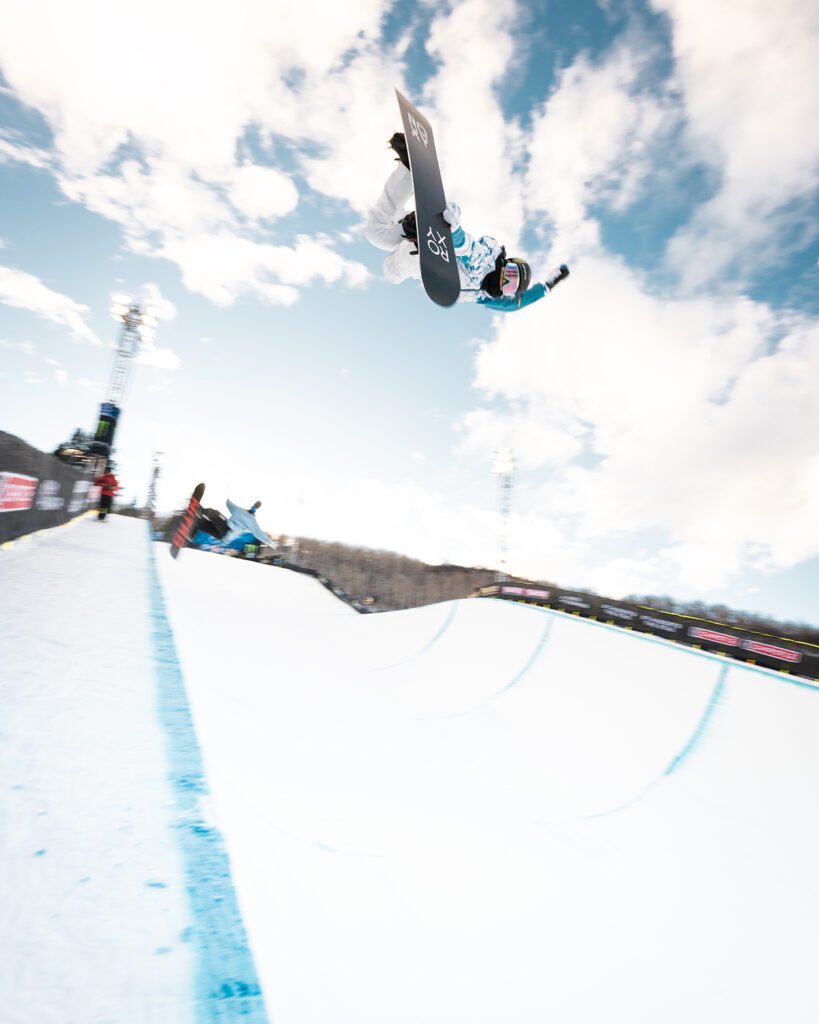
Whilst most of them seem to agree that course design can play a big role in challenging the riders and forcing adaptation and creativity – preventing them from learning one routine and repeating it at every contest – it is important to point out the difficulty of objectively scoring two very different parallel features. “It’s easier to evaluate the whole run when the features have fewer options. When a feature has a rail, transition, and jump feature on it, it makes it very confusing for the riders and judges, and I would imagine for the people watching as well. It’s not easy to compare them”, explains the Canadian coach.
But should the courses be so simple, Macdonald disagrees and explains how, “There has been a drift to standardized slope courses for a number of reasons: formats, rulebooks, etc. Somewhere along the way, slopestyle was defined as a set-up of three rails and three jumps. And there is a backlash in the competitive community when a slopestyle course does not meet these standards, and people get upset. But we can break this paradigm by just doing something different – I’d say more unique courses and less defining of what a Slopestyle course is.”
Beggs continues to take this reflection a step further and disagrees with the statement about slopestyle being boring. “The core of slopestyle, as its name suggests, lies in diversity. Modern-day slopestyle is not all about the jumps. Section-by-section judging makes the rails have equal score weight to the jumps. It’s not just about flat boarding into a jump and hucking carcass – riders need a well-rounded skillset.”
The addition of transition features in the slopestyle courses seems to tick all the boxes when it comes to forcing creativity and variety, but also posing a challenge that can really make a difference in the field. “There are a lot of similar runs, but with a transition feature, amplitude is such a huge obvious game changer”, explains Chris Witwicki.
Scoring — Criteria
We can’t discuss creativity and progression and not talk about scoring as, in a competitive environment, the way tricks and performances are scored will inevitably dictate the evolution of the sport.
Chad has a rather wholesome way of explaining this: “The discussions about judging will never end, and that’s not an exaggeration. Like, if you zoom out and go full macro on the entire history of competitive snowboarding, there has never been a moment when everyone just agreed on judging.” And on reflection, Chad is right – but that is not going to stop us from talking about it!
For me, it’s not so much about whether somebody deserved an 89 or a 95 but rather how these numbers are made up, what the processes are and who gets to decide what’s cool or what isn’t. Sven Throgren reflects that, “Last year, the judges were really pushing for more unique tricks, and it really paid off [to be creative], but at the same time, they kept a healthy amount of importance on the difficulty… So right now, I would say they are doing a good job.”
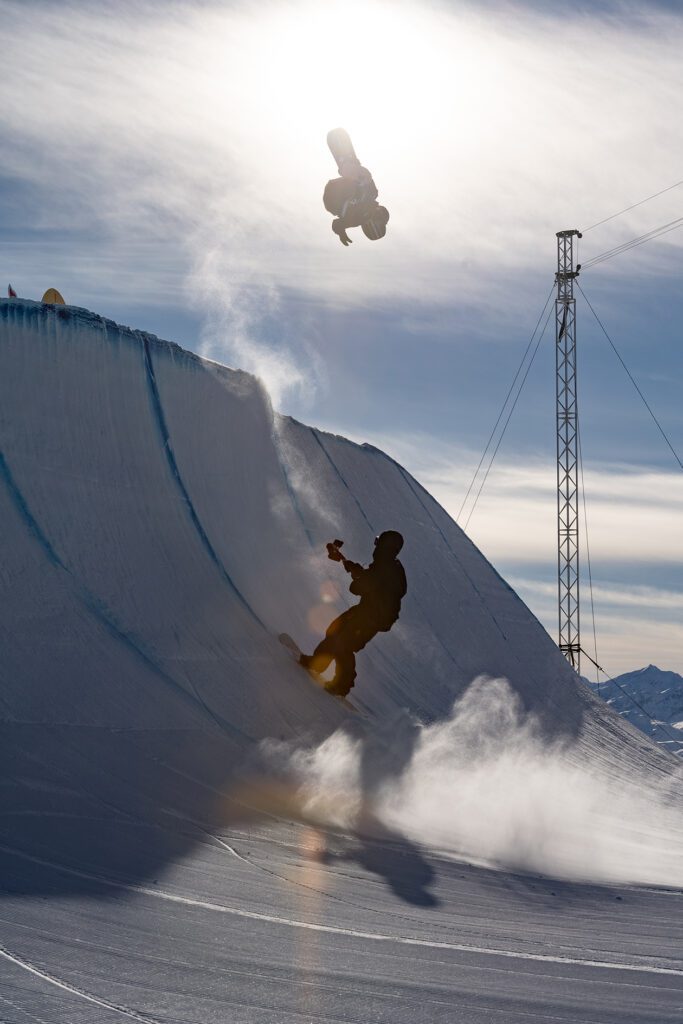
The criteria can vary from contest-to-contest, although in a tour of course they try to keep them consistent. They will also always have to adapt their meanings to the course and the field. Judging criteria is not a static concept but a guideline from which to set a baseline, and this, again, will be different from contest-to-contest. I think it’s important to remember that the numbers are irrelevant and aren’t comparable from one event to another. They are only a tool to establish a ranking within that day, that event and that group of riders. The Snow League’s Head of Competition, Sandy Macdonald, who has also been a judge for many, many years and has been heavily involved in the definition of the criteria for contests, the education of judges and the overall conversation on how to be able to give a subjective opinion as objectively as possible, affirms, “I believe the backbone of the [judging] criteria is sound. How they are implemented and evaluated is where I think we can start to shift. I have been thinking about this for years and still have no real answers, but I can tell you we are definitely working on it.”
Canadian coach Witwicki concurs with Sandy, “It’s good and objective, and for the most part, it’s applied well. It’s still evolving.” And he continues to hit another nail on the head, “A big thing is the communication between all the parties involved. Riders and coaches need to put in the work, go to the clinics and get a good understanding of how events are judged and what the criteria are, they need to become better students. Judges need to be well-spoken and organized at events and speak to the criteria objectively. There needs to be more curiosity when approaching judges about a score. The narrative you tell yourself and what the judges have observed can be two completely different stories. So it’s important to ask: ‘What did you see in my run that I could have done better?'”
“I think people need to realize that disagreeing about judging is also one of the appeals of the whole thing. We all like arguing about this shit. It’s fun!” Concludes Chad Buchholz.
The judging criteria are only a part of the puzzle of how decisions are made into a much bigger system of rules and guidelines. Specifically speaking about FIS, the decisions, benchmarks and rules are made through a system of committees with the voices of the nations expressed through their own representatives. And whilst we have already established that there are other tours, and that the competition for becoming the most respected competitive event, league or tour is once again building up, FIS remains the only way to access the Olympic path (Snow League points will count towards it too, though). So, it seems relevant to evaluate the FIS’s capacity to represent the riders on tour as well as the ability to ensure the long-term interest of the community in competitive snowboarding.
Chad Buchholz explains in detail how it works, “I think it’s important for people to know that it’s not just established by FIS full-stop. Every decision ostensibly made by FIS comes from a process that involves intensive conversations amongst FIS officials and the representatives of the national associations, with those representatives continually involved in intensive conversations within their ranks and with the community surrounding them.
There are diverse groups of passionate snowboarders involved at all steps along the way towards making the FIS decisions that will affect competitive snowboarding in the future. By no means is it a perfect system making perfect decisions, but the desire is there to do the best for the sport.”
Chris Witwicki, who is one of these representatives, expands Chad’s insight by highlighting the importance of every member, “Putting in the work at the meetings in service of the sport and the community.” And continues to assert that, “There are a lot of hardworking individuals in the committees trying to serve snowboarding and respect it.” Witwicki explains how the system can be effective, especially with more snowboarders involved in guiding the rules, which fosters a sense of community support. However, for snowboarding culture to thrive, a balance between structure and rule-bending is needed to allow evolution. He also explains how challenges arise from combining Freeski and Snowboard under the same FIS committee, as their cultures and values differ. Decisions that work for one may not fit the other, such as the contrasting views on section-by-section judging. “The key is to ensure any changes serve the entire snowboarding community, from athletes through to event staff,” he concludes.
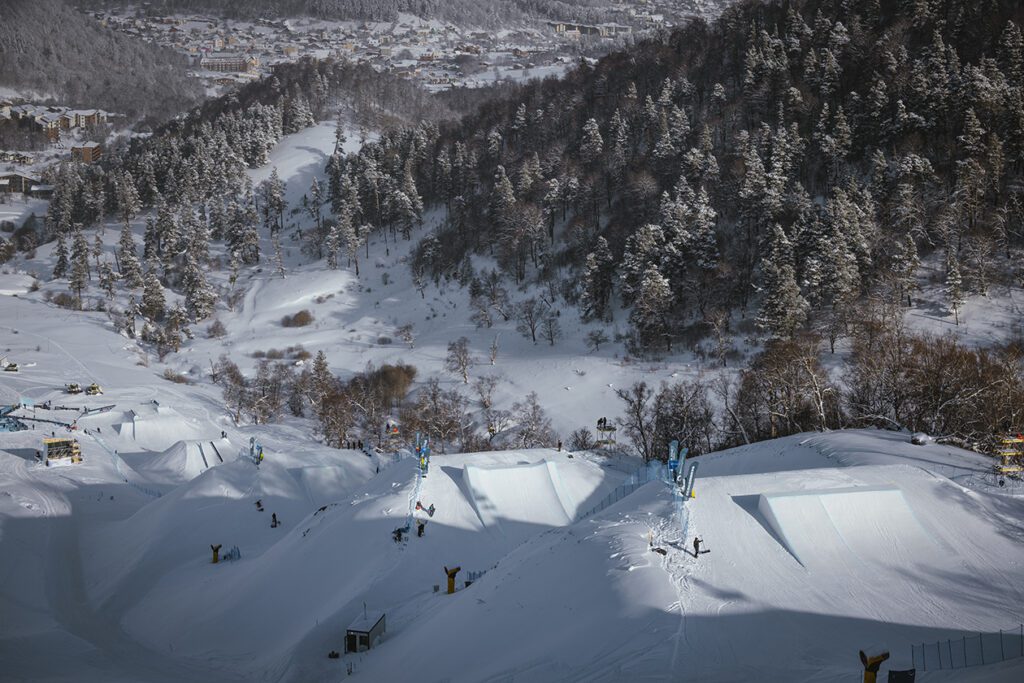
After asserting that this is a very nuanced discussion, Sandy Macdonald explains the varying perspectives, as each nation, coach, and rider has different views on what’s best for the snowboarding community. He acknowledges that there is no clear solution, and while some may prioritize the community’s interests, that isn’t always the case. Sandy believes, “As long as the people who are passionate about it stay involved, fight the fights, and listen to what snowboarding wants and needs, I think we are in a good spot. The second we become apathetic, let others tell us what to do and give up because we think it’s impossible or too hard to effect change, we are done.”
Interestingly, both Sven and Taylor feel very strongly about the topic, “I don’t think any governing body has proven the ability to cultivate long-term interest”, says Gold. “Competitive snowboarding needs to evolve to keep people engaged, and radical change is necessary.”
Sven suggests that the key issue is making snowboard competitions more interesting and appealing and explains how, despite being hardcore enthusiasts, many fans don’t watch FIS events. “To change this, I believe we should drastically increase the prize money – fivefold – and reduce the number of competitors to create a more elite tour. There should be a significant reward for the overall winner, with a clear storyline that runs throughout the season.” He continues, “Honestly, I couldn’t even tell you who won the title last season. That says it all.”
Pushing the Limits: The Future of Halfpipe Snowboarding
As halfpipe snowboarding continues to evolve, the boundaries of progression are constantly being redefined. While riders and industry insiders agree that snowboarding is approaching new heights, opinions differ on just how far it can be pushed – and whether the sport is teetering on the edge of safety.
Olympian Taylor Gold believes that despite the inherent danger of halfpipe snowboarding, the evolution of training has made it safer to execute higher-level tricks. “A rider has to be so good and have such good timing that in some ways it is safer than when guys were throwing the first double corks without airbags or an understanding of the way the trick works,” says Gold. He sees no limit to the progression, suggesting that, “Triple 18s are possible, and possibly a quad if not done overly flippy.” Coach Chris Witwicki agrees with this outlook, adding that the top riders are methodical in their progression. “These riders are much more calculated than most think. They take the steps necessary in order for the progression to be as safe as possible.” Snow League’s Sandy Macdonald adds to this point of view, stating, “We would be naive to think that we didn’t pass into life-threatening years ago, maybe almost from the beginning, but I do believe that we have gotten way smarter on how we approach learning and progressing these ultra-difficult maneuvers.” For both Macdonald and Gold, the future of halfpipe is less about danger and more about innovation through careful preparation and calculated risk.
The airbags and the modern facilities definitely contribute to a safer progression and have hugely impacted how the athletes train for these once-thought-impossible tricks. “We now have access to the highest quality facilities to perfect the craft in the safest ways possible”, continues Macdonald. “They have the reps on the building blocks, and by using tools like the airbag, they know the outs of the rotation and when to eject safely,” adds Witwicki, citing athletes like Ayumu Hirano and Scotty James, who have honed their craft through meticulous repetition and safety-first approaches. Witwicki also emphasizes that the sport’s progression isn’t just about performing bigger tricks but about how those tricks are executed. “How you do the trick is more important than the trick itself,” he asserts, underlining the artistry of halfpipe snowboarding.
Whilst being hesitant to guess the limits of what might be possible, FIS’s Chad Buchholz remains skeptical about the endless possibilities for bigger tricks. “I can’t really imagine that we’ll be seeing five-hit, five-triple runs anytime soon,” he says. While he expects some riders to perfect triple corks in time for the Milano-Cortina Olympics, Buchholz is more excited to see the progression in women’s snowboarding, particularly multi-doubles runs. His view suggests that, rather than endlessly pushing for more rotations, snowboarding’s next frontier could lie in perfecting current tricks and raising the bar across both men’s and women’s divisions.
Olympic Judge Adam Beggs also sees room for innovation, similarly to Taylor Gold, without resorting to more spins or flips. “There’s still so much left to explore… switch backside becoming a required skill, more alley-oop rotations, and different grab varieties,” Beggs notes, hinting that creativity could shape the sport’s future just as much as raw athleticism and, despite acknowledging the fact that there will always be someone that will push for an extra 180 or an extra flip, “It doesn’t have to nor should be the pinnacle of halfpipe riding.” He concludes: “But the progression is getting really exciting…”
Satu Järvelä offers a more somber reflection on the future as she expresses concern over the pressure placed on young athletes as the tricks become more extreme. “When the tricks are so crazy… it’s pretty overwhelming,” she says. Järvelä questions whether this level of progression will alienate the next generation of riders, suggesting that alternative disciplines like rail riding or banked slalom may offer more relatable paths in the sport.
The relatability and inspiration to younger generations, as well as making the competition comprehensible to the audience, plays a big part in the evolution of the sport, and with modified halfpipes occasionally making an appearance in recent competitions, I thought it was worth exploring whether the future would evolve in this direction. Whilst opinions are divided, the general consensus is that modified halfpipes may offer a fun alternative but aren’t likely to replace the traditional halfpipe format.
With this in mind, Taylor Gold expresses his desire to “force riders to adapt” and explains that including smaller pipes in the competitions, “Would also be great for resorts that can’t build a 22-foot pipe, and would still inspire more kids to ride transition”. Sandy Macdonald, whilst agreeing to the necessity to have more people involved, categorically states that, “We need more smaller pipes.” And explains that, “Dropping in to a 22-foot pipe is completely unapproachable to most humans.” He continues, “I can’t think of another sport where you can start competing for the first time in an Olympic venue.” Sandy also can’t see the modified pipe being the future of halfpipe riding. “Traditional halfpipe will always have a place in our sport and will always be a staple”.
FIS’s Chad Bucholz agrees and adds that modified pipe, “Seems like a novelty,” and he can’t see a buzz build up around modified pipe events, but they make for an, “Okay show.” He doesn’t believe the halfpipe format needs messing with. Highlighting the fact that this discipline is perhaps the most quantifiable competition format in snowboarding, “I love how pure it is. There is no vibe in snowboarding quite like when the best pipe riders in the world are going toe-to-toe in an Olympic final.” This sentiment perhaps refers to the simplicity of the format and the fact that, “Traditional pipe is easier to follow for most people,” as coach Witwicki points out. Something that judge Adam Beggs agrees with, as he asserts, “We need to make transition riding more appealing to the masses.”
Wiwicki continues then to express the worry about the hard time we are having, “Keeping pipes running globally,” and that adding modified pipes to the mix would be an even harder task. But he agrees with Gold and Macdonald on the need for smaller transition features in the resorts around the world, and goes further on the topic by adding that they need to be placed as stand-alone features, instead of being presented as an alternative to a jump or a rail that might be easier to ride. “If it’s the only feature in the vicinity, then you will see the progression quickly.”
Whilst a pipe rider like Gold expresses his interest in the variety and the challenge these kinds of events may pose for the riders, the Swedish slopestyle specialist Sven Throgren disagrees, stating that he, “Hasn’t seen a super exciting modified pipe competition, at least not in the way they’ve done it so far. If you modify the halfpipe too much, it starts to resemble Slopestyle. That said, I would like to see Slopestyle courses continue to evolve and experiment with more transition features, and I love when there is a true halfpipe feature in the slope course.”
Creativity in riding is always dictated by the course set-up, and we have seen time-and-time again that when the builders pose a new feature or a new challenge, the riders must adapt, think outside of the box, and almost always they will surprise us with something nobody else even thought about. Hence, the introduction of the transition features in slopestyle is something most – like Sven – approve and agree on, as it can help progress the sport in the right way.
Thorgren provides a final perspective, focusing on the athletes’ personal control over their progression. “It’s up to each rider to ride on their own level and decide how far to push it,” he says, emphasizing the importance of self-awareness and respecting one’s limits. For Thorgren, it’s not about chasing the most dangerous trick but about understanding when and how to push boundaries safely.
Final thoughts
I have always been of the opinion that people who criticize things and do nothing to change them, big or small, shouldn’t be allowed to complain. I am also wary of people who get too comfortable in their own seats with things that they previously built. So I believe that sparking these conversations about topics that challenge the status quo of the current structures, and analyzing, even perhaps over-analyzing, aspects of them are essential to keep the progression flowing on these ever-evolving topics.
One thing is certain: beyond respect for each other’s work and passion, there is no right or wrong in snowboarding, and whilst competitions are just a part of it, they are a big part. Witwicki summarizes it perfectly, “We need to stay away from too much ‘you should’ in snowboarding. At the end of the day, snowboarding doesn’t need saving. Even without events, sponsors, progression, or tricks, people would still slide sideways down a mountain because that’s the true essence of the sport. It’s not snowboarding that needs saving – it’s snowboarding that saves us.”

